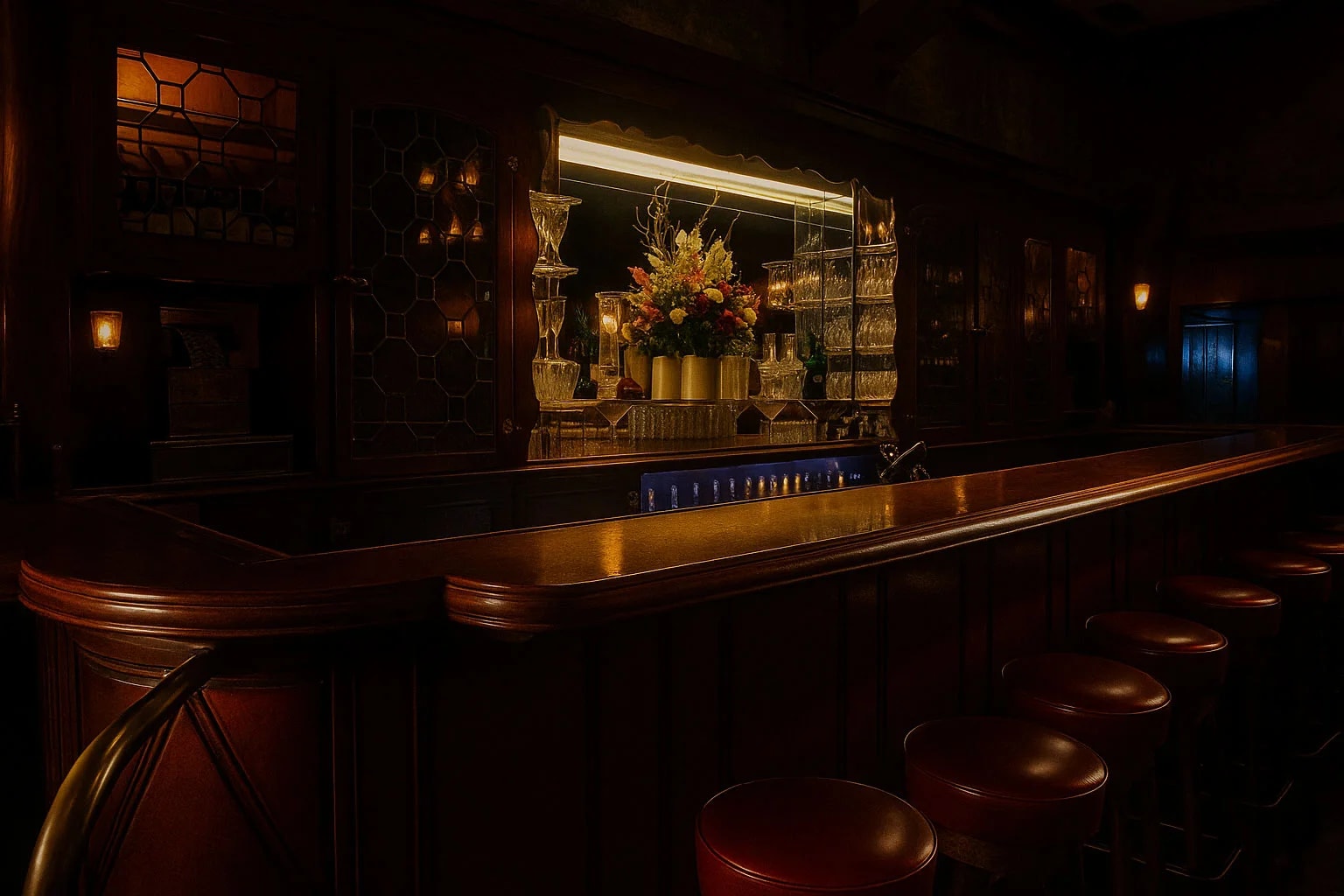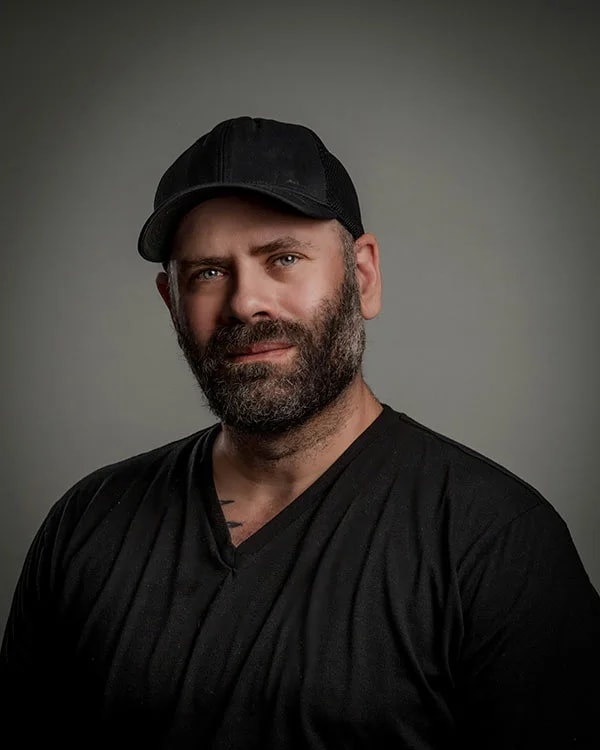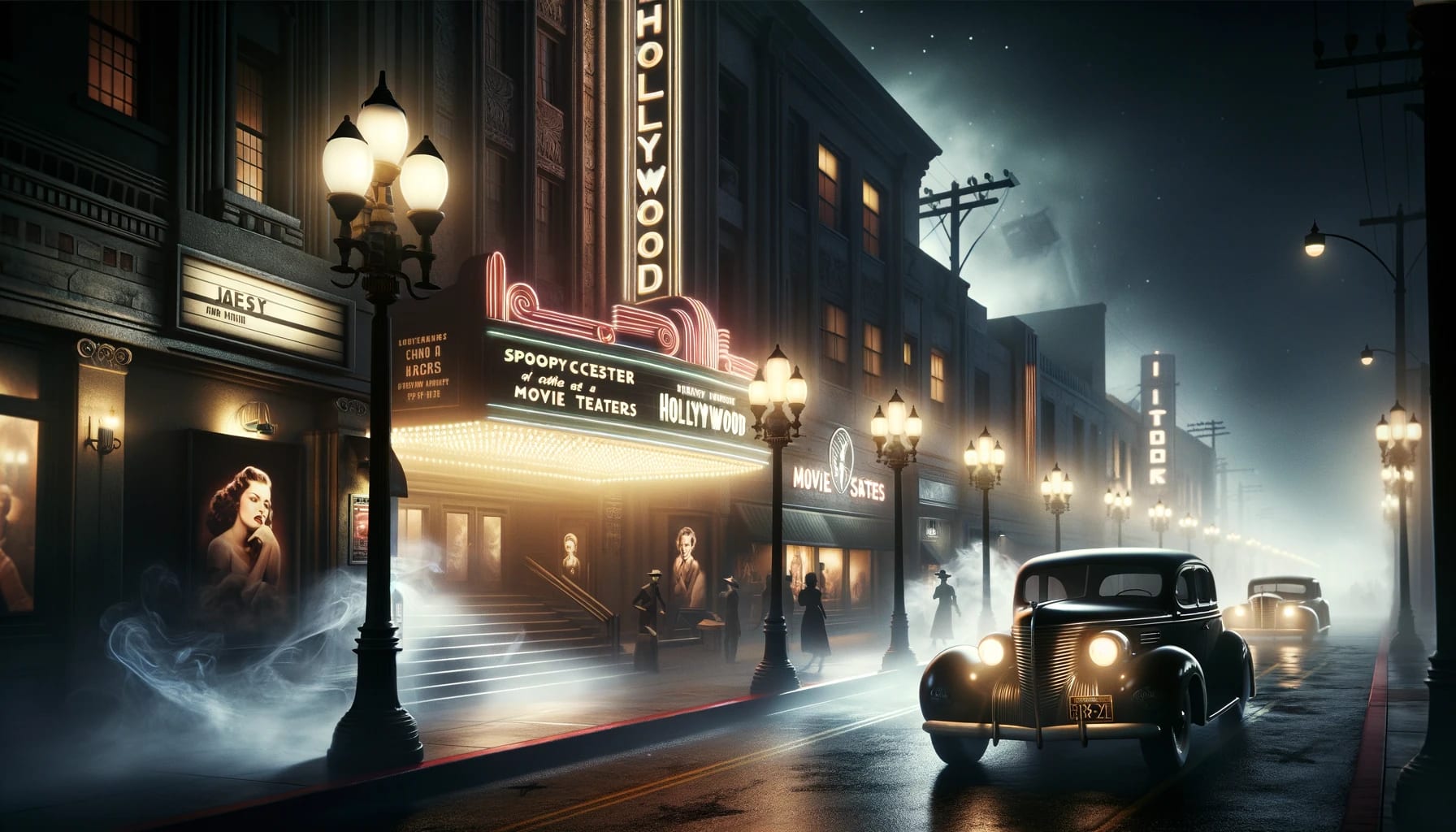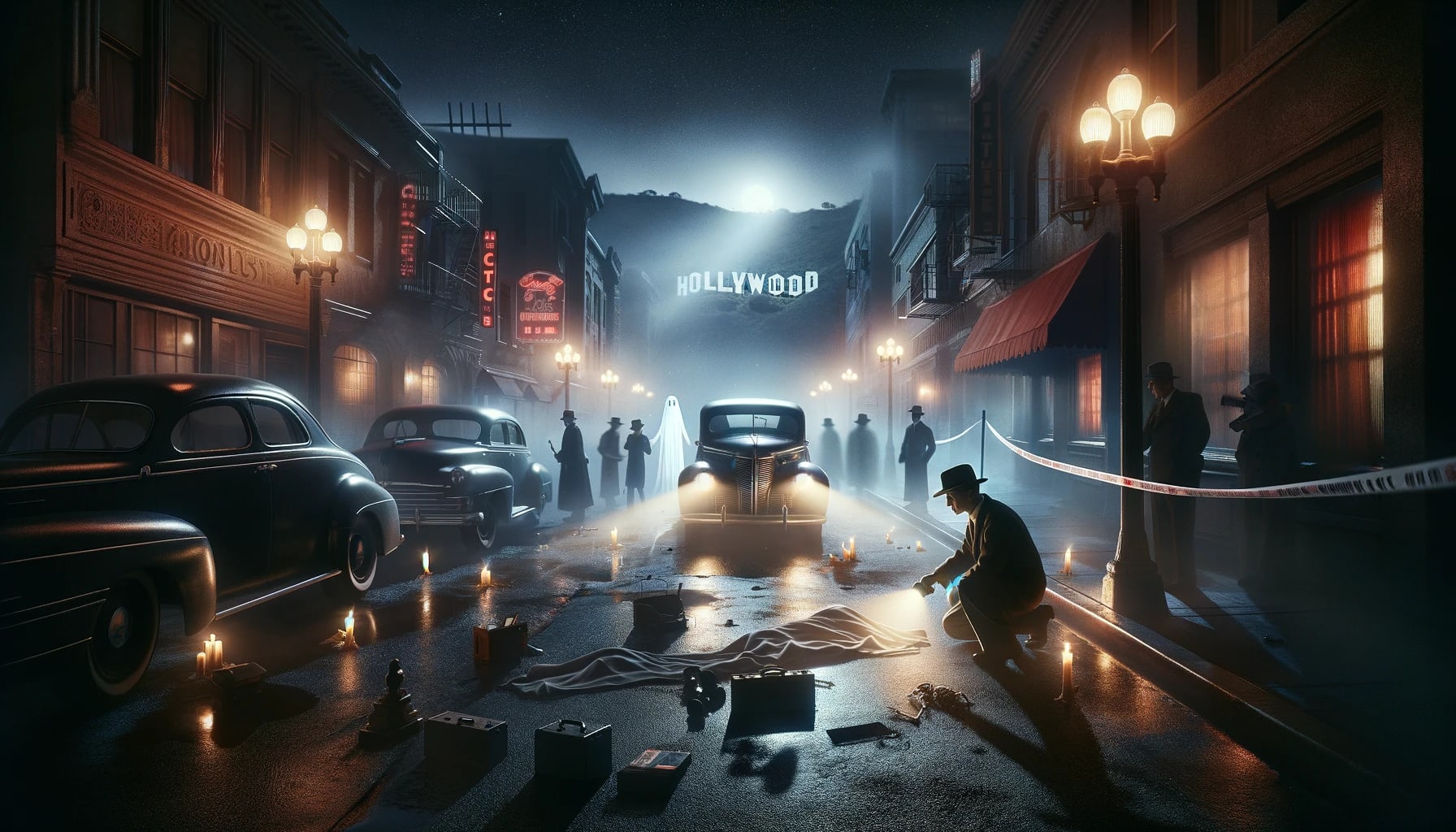Walking into Musso & Frank Grill at 6667 Hollywood Boulevard is like stepping back in time. The dark wood paneling, vintage bar, red leather booths, and tuxedoed waiters (some of whom have worked there for decades) preserve the atmosphere of old Hollywood. The restaurant's motto—'Unchanged Since 1919'—isn't just marketing; it's a commitment to maintaining the exact environment that drew Hollywood's elite for over a century. But the restaurant has preserved more than just its décor—many believe it has also retained the spirits of its most devoted patrons.
Hollywood's Living Room
Musso & Frank opened in 1919, making it the oldest restaurant in Hollywood. Frank Toulet and Joseph Musso founded the establishment during Hollywood's transition from a small town with orange groves to the entertainment capital of the world. The timing was perfect—as the film industry exploded, Musso & Frank became the unofficial commissary for the studios and the living room for Hollywood's creative class.
The restaurant quickly established itself as the place where deals were made, scripts were written, and careers were launched or destroyed. Writers particularly loved Musso & Frank—the back room became legendary as the meeting place for the 'Round Table,' a group of screenwriters who gathered to drink, argue about politics and art, and commiserate about the studio system. The restaurant's tolerance for long lunches, strong drinks, and eccentric behavior made it a haven for creative types who might not be welcome elsewhere.
The Golden Age of Hollywood
From the 1920s through the 1960s, Musso & Frank was at the absolute center of Hollywood's social and professional life. The restaurant's guest list reads like a who's who of American entertainment:
- Charlie Chaplin held court at his regular booth, often arriving after midnight following premieres
- F. Scott Fitzgerald drank heavily while trying to make it as a screenwriter
- William Faulkner worked on scripts between bourbon-soaked lunches
- Raymond Chandler plotted his hard-boiled detective novels over martinis
- Orson Welles celebrated and commiserated about his tumultuous career
- Marilyn Monroe, Clark Gable, Greta Garbo, and countless other stars dined regularly
The intensity of emotion concentrated in the restaurant over decades—hope, despair, celebration, betrayal, love, and loss—created what paranormal investigators describe as a 'psychic residue,' imprinting the building with the energy of all those who passed through.
The Ghost of Charlie Chaplin
Sir Charles Spencer Chaplin (1889-1977), better known as Charlie Chaplin, was one of the most influential figures in cinema history. The British-born comedian, actor, and filmmaker rose to fame during the silent film era, creating the iconic character of 'The Tramp' with his signature bowler hat, toothbrush mustache, and cane. His films, including 'The Kid,' 'City Lights,' and 'Modern Times,' combined physical comedy with social commentary, making him beloved worldwide.
Chaplin was a devoted regular at Musso & Frank, particularly during the 1920s through the 1940s. He preferred the back booths where he could hold court with fellow actors, directors, and writers. He was known for staying late into the night, often arriving after premieres or parties elsewhere, treating the restaurant as his personal club.
Staff and patrons report encountering Chaplin's ghost:
- A small-statured man in vintage 1920s-1930s attire sitting alone in the back booths
- The distinctive scent of hair pomade popular in the 1920s
- The sound of laughter and applause when the back room is empty
- Cold spots concentrated in Chaplin's favorite booth (reportedly the third booth from the back on the right side)
- Some witnesses report seeing a man with a distinctive mustache who vanishes when approached
- A few servers have reported taking an order from a gentleman matching Chaplin's description, only to return and find the booth empty
One longtime bartender reported: 'I've worked here 40 years, and I've seen him at least a dozen times. Always in the same spot, always alone, always looking like he's waiting for someone who never arrives.'
The Spirit of Orson Welles
George Orson Welles (1915-1985) was an American actor, director, screenwriter, and producer who revolutionized cinema with his 1941 masterpiece 'Citizen Kane,' often cited as the greatest film ever made. A child prodigy who became famous for his 1938 radio broadcast of 'War of the Worlds' (which caused mass panic), Welles was known for his distinctive deep voice, towering presence, and brilliant but often troubled career. Despite his genius, Hollywood largely rejected him, and he spent much of his later life struggling to finance his projects while working as an actor-for-hire.
Welles was a fixture at Musso & Frank from the 1940s until shortly before his death in 1985. The restaurant was one of the few constants in his turbulent life, and he could often be found there, drinking, smoking cigars, holding forth on cinema, politics, and art. He favored the bar area and specific booths where he could see the entire dining room.
Encounters with Welles' spirit include:
- A large, imposing figure in dark clothing at the bar, disappearing when approached
- The strong scent of cigar smoke (despite California's smoking ban) in areas Welles frequented
- His distinctive deep voice heard in conversation when no one is there
- Glasses of red wine that mysteriously empty themselves
- A presence that makes people feel intellectually challenged or judged
- Several guests have reported sitting in a booth and suddenly feeling as though a very large man has sat down across from them, though no one is visible
Staff members report that activity related to Welles seems to increase around the anniversaries of 'Citizen Kane's' premiere (May 1) and his death (October 10). Some believe his spirit is drawn back to one of the few places where he was consistently welcomed and respected, regardless of his current professional fortunes.
Jean Harlow's Melancholy Presence
Harlean Harlow Carpenter (1911-1937), known professionally as Jean Harlow, was a platinum blonde bombshell who became one of the biggest sex symbols of the 1930s. Often called the 'Blonde Bombshell' and the 'Platinum Blonde,' Harlow starred in films like 'Hell's Angels,' 'Red Dust,' and 'Dinner at Eight.' Her combination of beauty, comedy timing, and down-to-earth personality made her immensely popular. Tragically, she died of kidney failure at just 26 years old, at the height of her fame and just months before she was to marry actor William Powell.
Harlow dined frequently at Musso & Frank during her brief but blazing career. She appreciated the restaurant's discretion and the fact that she could eat in peace without constant interruption from fans. She often came alone or with close friends, preferring the more intimate booths where she could escape the pressures of her public image.
Her ghost is reported throughout the restaurant:
- A beautiful blonde woman in 1930s attire appearing in the ladies' room mirror
- The overwhelming scent of tuberose (her favorite flower, which was in her signature perfume)
- A profound sadness that overcomes certain guests, particularly young women, when sitting in specific booths
- The sound of quiet crying from the ladies' room when it's unoccupied
- A glamorous woman in white or silver who appears briefly before fading away
- Some witnesses report seeing her reflection in the bar mirror, always looking sad and distant
Unlike the spirits of Chaplin and Welles, who seem content to haunt their beloved restaurant, Harlow's presence feels melancholic and unresolved. Some psychics who have visited the restaurant believe her spirit is trapped by the tragedy of her early death, forever mourning all the life she didn't get to live. Her apparition is most frequently reported during the evening hours, particularly on Saturdays, when she would have dined at the restaurant during her lifetime.
The Writers' Room Phenomena
The back room of Musso & Frank, where the legendary screenwriters' 'Round Table' met for decades, experiences intense paranormal activity that staff have come to accept as normal. This area, where some of Hollywood's greatest writers gathered to drink, argue, and commiserate, seems to retain the psychic energy of countless passionate discussions.
Reported phenomena include:
- The sound of typewriters clacking (from an era before laptops)
- Animated conversations and arguments heard when the room is empty
- The scent of tobacco, though smoking has been banned for decades
- Glasses and plates moving on tables
- Cold spots that move around the room as if ghostly patrons are changing seats
- Papers rustling and moving despite no air current
- The sensation of sitting down in a booth that's already occupied by an unseen presence
- Some staff report feeling suddenly inspired or creative when in this room, as if the writers' muses still linger
Cleaning staff particularly dislike working in the back room late at night, reporting feeling watched and judged, as if the ghostly writers are critiquing their work. One janitor reported hearing a voice say, 'You missed a spot,' only to turn and find the room empty.
The Phantom Bartender
Multiple witnesses have reported seeing a bartender who doesn't exist on the staff roster. This spirit, believed to be a longtime bartender from the 1940s or 1950s who spent decades behind the bar before dying, apparently continues his work in the afterlife.
Encounters include:
- A bartender in a vintage white jacket mixing drinks when the bar is closed
- Bottles moving or being found in different positions overnight
- The sound of glasses clinking and being washed after hours
- Ice appearing in glasses that were empty
- The occasional patron reporting that their drink was made 'old style'—using recipes and techniques from decades ago that current bartenders don't use
- Security guards report seeing someone behind the bar late at night, only to find it empty upon investigation
Some longtime patrons claim the phantom bartender makes the best martini in Hollywood—though they can never seem to catch him to order a second one.
Reports from Ghosts of Hollywood Tour Guests
Ghost City Tours' Ghosts of Hollywood Tour frequently stops at Musso & Frank Grill, and our guests have reported numerous paranormal experiences:
-
Photograph Anomalies: Guests capturing photos of the restaurant's interior frequently discover unexplained orbs, light streaks, and shadowy figures when reviewing their pictures later.
-
Emotional Impressions: Sensitive guests report sudden waves of emotion—nostalgia, sadness, excitement, or creative inspiration—when standing near certain booths.
-
Cold Spots: Despite California's warm weather, guests regularly report encountering cold spots inside the restaurant, particularly in the back room and near specific booths.
-
Sensory Experiences: Multiple tour participants have reported smelling cigar smoke, vintage perfume, or hair pomade when walking past the restaurant, even from outside.
-
Apparitions: Several guests have reported seeing figures in vintage clothing through the windows, particularly during evening tours, only to find those booths empty when they look more carefully.
One guest reported: 'I was looking through the window at the back booths, and I swear I saw a small man with a mustache sitting alone, wearing old-fashioned clothes. I blinked, and he was gone. My friend caught it on video—you can see a dark shape that wasn't there a second before or after.'
Visiting Musso & Frank Grill
Musso & Frank Grill remains open and operating, serving the same classic American and continental cuisine that has made it a Hollywood institution for over a century. Dining at Musso & Frank offers the unique opportunity to eat in a genuine piece of Hollywood history—and possibly encounter its famous ghosts.
For those interested in the paranormal:
- Request a booth in the back room, particularly on the right side, where the most activity is reported
- Visit during quieter hours (late lunch, early dinner) when the spirits seem most active
- Pay attention to the bar area, especially the far end where Orson Welles preferred to sit
- The ladies' room has frequent reports of Jean Harlow's presence
- Join Ghost City Tours' Ghosts of Hollywood Tour to learn the detailed history and ghost stories
- Bring a camera—the restaurant's dim lighting creates perfect conditions for capturing anomalies
Tips for ghost hunting:
- Evening hours seem to produce more activity than lunch
- The restaurant is most atmospheric (and reportedly most haunted) on foggy or rainy nights
- Be respectful—you're in an operating restaurant with living diners and hardworking staff
- Many of the older waiters have their own ghost stories; if you dine during a quiet period, they may share them
Musso & Frank Grill represents a direct connection to Hollywood's golden age. Its ghosts aren't frightening specters but rather the spirits of people who loved the restaurant so much in life that they continue to frequent it in death. They're still at their favorite tables, still ordering their usual drinks, still arguing about art and celebrating their triumphs—forever frozen in the era when Hollywood meant glamour, creativity, and magic.

Where Hollywood legends dined in life—and still do in death

Where ghostly bartenders still mix the perfect martini



